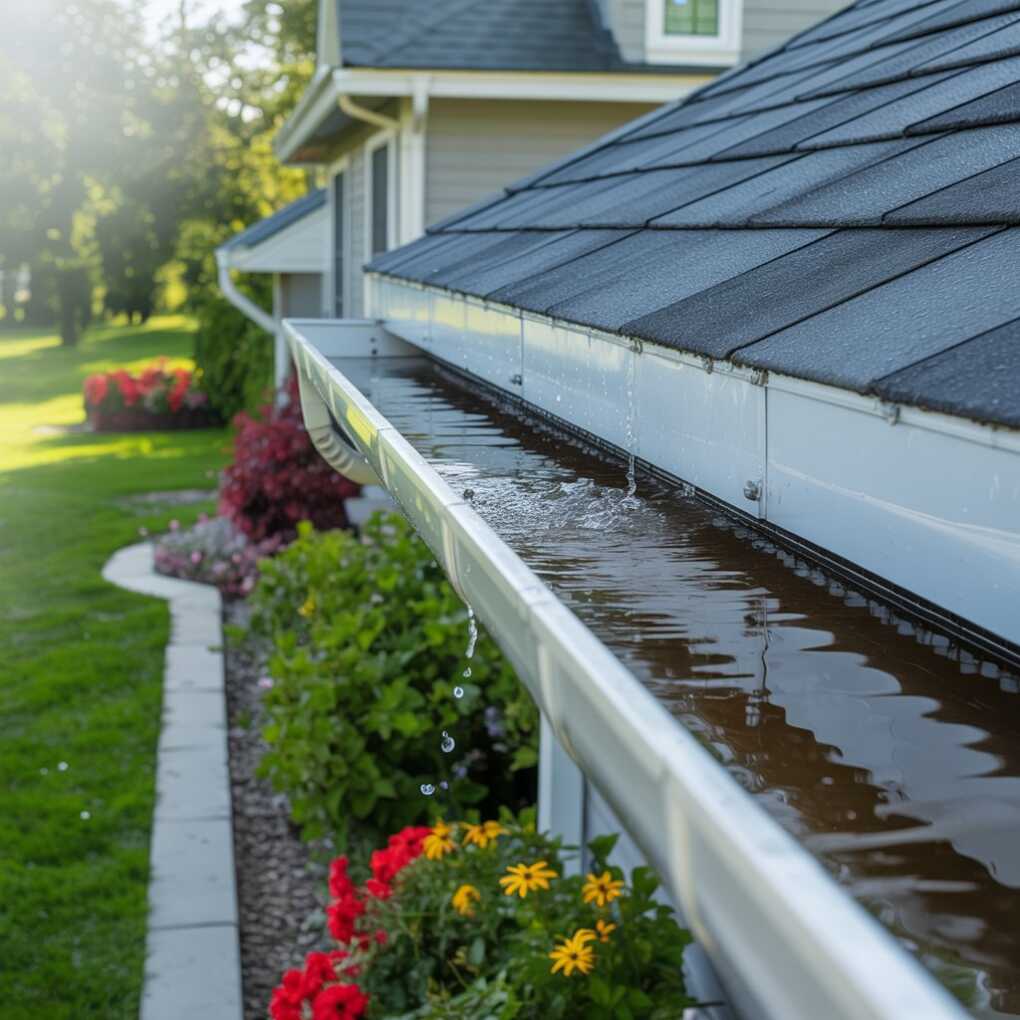Gutters might seem like a small detail in the structure of a home, but their role in maintaining the overall integrity of your property is far more significant than most realize. Especially in regions with varying weather conditions, gutters control how water flows off the roof and away from the building’s foundation. Without them, rainwater can accumulate near the base of your home, weakening the soil and eventually threatening the stability of your foundation.
We will explore how properly functioning gutters directly influence foundation health, the potential consequences of neglecting them, and why homeowners should give more attention to these overlooked systems. Whether you’re maintaining an older property or building a new one, understanding the value of efficient gutters could save you from costly repairs and long-term damage to your home’s most critical support structure. Companies like AAA Midwest Roofing emphasize the importance of integrating reliable gutter systems as part of a broader approach to protecting your home’s foundation and ensuring long-term stability.

Why Gutters Matter for Foundation Longevity
Gutters Prevent Water Accumulation Around the Perimeter
One of the primary functions of gutters is to redirect rainwater away from the base of a home. When gutters are missing, broken, or clogged, rainwater falls directly off the roofline and lands near the foundation. Over time, this water soaks into the soil, causing it to expand. As the soil repeatedly expands and contracts with wet and dry cycles, it places continuous pressure on the foundation walls. This can lead to cracks, uneven settling, or complete foundation failure.
Especially in climates where heavy rainfall is common, functional gutters are essential for avoiding excessive moisture in the soil surrounding a home. In this context, gutters serve not just a cosmetic or secondary purpose—they play a structural role. Proper downspout extensions further enhance this effect by moving water several feet away from the foundation, ensuring the soil remains stable. It doesn’t exert additional stress on the walls and base of the property.
Erosion Control Protects the Structural Base
Unchecked water runoff can lead to soil erosion around the house, which exposes and weakens the footings of a foundation. When the topsoil and layers underneath it are gradually washed away, the earth supporting your home base begins to diminish. This shift can cause sections of the foundation to settle unevenly, leading to cracks not only in the foundation itself but also in walls, floors, and even door frames. By properly channeling water away from your home, gutters act as the first defense against this erosion. The simple presence of a well-maintained gutter system ensures the topography around your house remains consistent and stable.
This means the support provided to the foundation by the surrounding soil is dependable over time. In regions where wind and rain combine to intensify runoff, this kind of erosion control becomes essential to any preventative home maintenance strategy.
Gutters Help Prevent Basement Flooding
Basement flooding is often a symptom of poor water management around the house. When rainwater pools at the base of a home, it can seep through the walls or floors of a basement, particularly if the foundation already has small cracks or vulnerabilities. A consistently wet foundation can also create hydrostatic pressure, forcing water through the tiniest openings. The result is water damage, mold, and compromised air quality within the home.
Properly installed and maintained gutters ensure water is directed far away from the structure to significantly reduce this risk. Downspouts that discharge several feet from the foundation or connect to underground drainage solutions are particularly effective. By preventing water from collecting near the home, gutters indirectly reduce the likelihood of moisture entering basements and crawl spaces. As such, they are an indispensable feature for homeowners looking to protect their foundations and indoor environments.
Long-Term Cost Savings from Preventative Design
Many homeowners underestimate the long-term financial benefits of a proper gutter system. Foundation repairs, especially those involving structural damage or shifting, can be some of the most expensive fixes a homeowner will face. These repairs often require extensive labor, concrete reinforcements, and sometimes heavy equipment to realign or stabilize a compromised foundation. In contrast, installing or upgrading a gutter system is a relatively modest investment with long-term value.
Gutters act as a cost-saving barrier by minimizing the risk of erosion, water pooling, and hydrostatic pressure. Furthermore, installing gutter guards and regular cleaning can extend their lifespan and efficiency, reducing maintenance needs and preventing clogs. When viewed from a financial perspective, gutters are not just a protective measure—they are an economic strategy. Investing in quality gutters now often means avoiding substantial foundation-related expenses in the future.
Proper gutters’ importance extends beyond simply moving water off a roof. They form a critical part of a home’s defense system against moisture damage, structural decay, and foundation instability. By managing water flow effectively, gutters help prevent soil erosion, reduce hydrostatic pressure, and protect a property’s interior and exterior elements. As homeowners focus on roof repairs, siding choices, and insulation upgrades, it’s vital not to overlook the silent protection gutters provide every day. In the long run, attention to gutter design, maintenance, and performance can mean the difference between a solid, worry-free home and one plagued by structural issues. Investing in this key component today ensures your home remains stable and secure for years.
